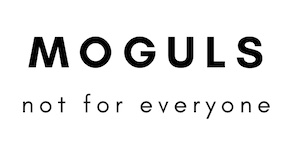Back in early spring, I wrote a couple of articles for members exploring the pros and cons of beaten-up infrastructure investment trusts like HICL (LSE: HICL).
All the listed infrastructure trusts sat on big premiums to net asset values (NAVs) before the 2022-2023 interest rate hikes.
Investors valued them for their chunky dividends in the depths of the near-zero rate era. They’d bid up the trust’s prices versus NAVs, which depressed the yields1. But the yields on offer were still attractive to many, though not to me. (Not on a 20-30% premium to NAV!)
As interest rates rose, however, those premiums wilted.
Eventually the trusts were trading on 20-30% discounts. In most cases though the dividend payments were at least held, so the income kept coming through.
Superficially all that had changed is investors wouldn’t pay a premium for income anymore. They wanted a discount, which boosted the yield for new money to 10% or more.
Canada comes calling
That situation unfolded over a couple of years. But my dives into infrastructure in early 2025 were prompted by an unexpected bid approach. One of the top trusts – BBGI – was taken out by a Canadian pension fund at very close to NAV.
Given that BBGI had swung from a 40% premium (!) to a 20% discount before the bid, the takeover price implied three things:
- An institutional-grade player saw BBGI’s quoted NAV of as accurate
- The NAVs of the remaining listed trusts might also be be pretty trustworthy
- Other bid approaches could unlock value for holders
It seemed a pretty good set-up. When I wrote my piece in early March, HICL, for instance was yielding 7.5%, just covered by income. So you were being paid to wait. Either for a recovery for the sector – probably with rate cuts – or for more takeover bids.
My post on HICL concluded:
While higher yields have increased discount rates and pressured asset prices, both HICL’s disposals and BBGI’s acquisition point to robust underlying valuations.
Adding to the case are the investment qualities of infrastructure that I discussed last time.
To which we might add that they aren’t big US tech shares trading on all-time frothy multiples!
I wouldn’t go crazy loading up on infrastructure, even in deaccumulation mode. But I do think a 5-10% allocation on today’s discounts makes sense, and I’m working towards the lower figure myself.
I’m not sure the trusts will beat the market over the next five years. But the high dividends will surely smooth the ride.
So far HICL has done okay. By summer the return after that Moguls piece was about 20% (including dividends) but it’s slipped back. I still hold, shuffling my position size up and down as I often do.
However I’m not here today to do a post-mortem on that infrastructure trust.
Rather I want to flag up the ones I deliberately avoided. The renewable trusts.
What’s wrong with renewable infrastructure?
In comments to my first article, readers asked about renewable trusts.
It would be hindsight to say I had a strongly bearish thesis about them. But I did note:
I agree with you about renewables in terms of the potential opportunity, but the risks are a lot greater too IMHO.
The truth was – and is – that renewable investment trusts give me the willies. While I have held them for brief periods, I’ve invariably gotten out again.
For the little it’s worth, my gut instinct has been vindicated in 2025 by the share prices:

Source: Google Finance
These are year-to-date returns. Clearly you’d rather not have woken up on January 1 burning with a New Year’s Resolution to load up on infrastructure (except for BBGI). The returns would be less lousy with dividends, but the renewable trusts (Tickers: TRIG, BSIF, and UKW) would still be well underwater.
We can probably explain the overall weak returns with some handwaving about inflation and interest rates being higher for longer than expected, and perhaps greater political risk. I won’t rehash my member posts today.
But why the sharp divergence between infrastructure and renewables?
Renewable infrastructure trusts under the hammer
On the face of it, these infrastructure trusts all offer the same sort of thing. Upfront exposure to assets – which can be contracts to clean hospitals or fix nuclear reactors, not just physical stuff like wind turbines – in return for a stream of income over time.
Sometimes the income is linked to inflation, or to other pricing mechanisms. Also note that certain assets have a definitely fixed life (contracts, for instance) whereas others, with good care, could last indefinitely (say a bridge or port). All that affects how their NAVs are calculated.
Again, this post is just flagging up the stark divergence. I can’t get into analysing the many thousands of different assets and contracts held across all the trusts.
But that’s fine because the clear split in 2025 is between general infrastructure and renewable trusts. It suggests something broad strokes is going on.
Here are a few hypothesis (or guesses) which lean into those willies I’ve long had about the sector.
The renewable infrastructure trust business model is broken
There have always been questions about the long-term investment case for renewable energy trusts – and infrastructure more generally. About everything from fees, opacity, accountability, and business models to discount rates and technology risk.
The list goes on. But one oldie that has now come to a head is ongoing funding.
Long story short, renewable trusts used to issue shares at premiums to NAV to (in theory) invest in new assets and (less agreeably) to top-up or backstop their income.
Issuing shares at a big premium is in itself value-accretive. It can turn £1 of new money into, say, £1.20. Just by virtue of it being on a trust’s balance sheet!
Renewables needed to be able to issue shares like this long-term because they are not structured as finite life vehicles, and they are (or at least were) not priced as such.
Maybe they should have been. Because now that discounts are sky-high, nobody wants to buy newly-issued shares at NAV, let alone a premium.
We can debate about how long their assets – rusting windmills, ever less-efficient solar panels – will last. But even with build cost inflation, I don’t see anyone arguing that they are getting more valuable.
So NAVs are effectively in run-off mode.
Moreover some argue the trusts have not made proper provision for decommissioning. Absent the coming of nuclear fusion or the like, I’d presume an existing and permitted renewable installation is more than likely going to be maintained or replaced. But it’s a valid line of inquiry.
I was worried about funding for many years. (Monevator writer Finumus flagged the issue on his old site five years ago!) But it’s no longer merely a theoretical risk.
This month Bluefield Solar Income Fund (LSE: BFSIF) called it out as the reason it was putting itself up for sale, noting:
BSIF’s shares have traded at a persistent discount to NAV for over three years, limiting access to equity markets and constraining growth.
Earnings have been directed toward dividends rather than reinvestment, leaving the Company unable to fully benefit from its platform, proprietary pipeline and growth potential.
Without fresh capital, BSIF can’t grow without cutting its high dividends. And as income is the reason shareholders own this trust, that’s not an option.
BSIF has substantial assets. It trades on a 36% discount. You’d hope some institution will pay more than that to own them.
But the listed trust game is clearly up in today’s climate.
The renewable energy business model is in doubt
These funding issues are probably the main reason renewable trusts are languishing.
It’s a vicious loop. The worse the discounts get, the less likely they’ll ever trade even at par again. This makes them even less attractive, and prompts more selling and still-higher discounts.
By now I’d guess they are priced at the market’s best estimate of takeover value.
However this is a bit of a tautology. It doesn’t tell us why they cratered to deep discounts in the first place.
Besides all the wider drivers for infrastructure discounts that I listed above, could the investment case for renewable energy specifically be in doubt?
I think not… but also yes.
Some 97% of scientists agree that humans are warming the Earth by burning fossil fuels. This is causing climate change. So the push to emit less carbon via using more renewables is intact.
That’s true even as anti-scientific denialism in the White House has hamstrung the US.
The International Energy Agency just forecast that renewables will become the largest global electricity source by 2030, accounting for nearly 45% of production.
But the world hasn’t all gone full Greta Thunberg. It’s down to economics:

Source: Our World In Data
Unfortunately, we poor strivers must invest in vehicles that invest in renewable assets, not in the assets themselves. Let alone in spreadsheet maths. This brings those high fees and so forth back into the picture. As well as stuff like adverse selection due to the capital constraints and predictable income needs of renewable trusts versus other players.
Moreover, the goalposts keep shifting.
Notice renewable trusts are struggling even as critics blame the UK’s ‘quixotic’ power-pricing mechanism – and the push to Net Zero – for our high electricity prices. If someone is making out like a bandit, it isn’t these trusts!
Nevertheless the government has announced it’s looking at the incentive regime – Renewable Obligation Certificates (ROCs) and Feed-in Tariffs (FiTs) – that were put in place to encourage more renewable installation.
Sticking with BSIF, the trust recently said the government’s proposals would cut the average annual household bill by only £4 to £13, depending on exactly what changes are implemented.
However BSIF estimates the resultant hit to its NAV at 2% to a whopping 10%.
Whatever the ultimate damage, it can only make renewable trusts less attractive.
Political risk
I’ve noted above that Donald Trump’s administration is defying the entire scientific consensus with its stance on global warming, and with the actions it has encouraged in response.
The results so far are mixed. Even some fossil fuel leaders are aghast (if only because of the policy uncertainty). But it does seem to have amped up new oil exploration at the margin and it has hit forecasts for US renewable installation:

Source: IEA
Meanwhile the man who brought us Brexit – you know, that great opportunity that’s costing us £100bn a year in lost GDP, that saw immigration of nearly a million arrivals in 2024, and that deleted your birthright to live in 27 other countries – has now turned his talents to decrying Net Zero and renewable energy.
Reform says it will scrap Net Zero targets and cut subsidies. It’s warned industry to stop working on new projects. All damaging stuff in the short and long-term. Yet Reform’s lead in the polls probably drove Labour’s mooted incentive changes.
It’s distasteful for me to even talk about this. It’s pure Barry Blimpism – literally tilting at windmills.
We probably should look soberly at the high cost of UK electricity, but not through this scaremongering and scapegoating. But that’s populism for you.
Needless to say it doesn’t make investing in renewable trusts any more attractive. Unless maybe you think their assets will become more valuable if new investment dries up, reducing supply?
Dark but I suppose it’s possible given the economics. The market doesn’t see it though.
Weather risk
The UK wasn’t very windy in the first half of 2025. On the other hand it hasn’t been especially cloudy.
I’m inclined to dismiss this concern because while I certainly believe in climate change, I don’t think it’s changed sufficiently in a couple of years to hammer the case for these trusts versus prior assumptions.
Higher inflation
You might point to higher maintenance costs for installed renewable energy due to all the inflation we’ve seen since 2022.
But this shouldn’t have hit renewables much harder than wider infrastructure, so again I don’t see it.
The market just doesn’t care about listed infrastructure
With that said maybe the divergence between vanilla and renewable infrastructure in 2025 is a red herring? Perhaps investors (/the market) remain very ambivalent about all these alternative assets?
The takeover for BGGI perked up demand for its direct peers, but this has mostly unwound. The enthusiasm we saw for the likes of HICL in the first-half of the year has gone.
As I type HICL is on a discount to NAV of c.24% again. INPP is on a 17% discount.
Smaller discounts than those of the renewables trusts, but still plenty big.
Into the too-hard pile
Of course the likeliest explanation is a combination of all these factors:
- Ongoing higher yields snuffed the recovery across the infrastructure sector.
- Growing political risk makes betting on any government-influenced income streams riskier.
- Persistent discounts imperil the business models of all the infrastructure trusts.
- Takeover hopes have dissipated.
On all of these counts, renewables fare worse.
Corporate activity has been more lacklustre – for example Downing Renewables was acquired at a 7.5% discount in June, versus BBGI going at par – and renewables look at far greater risk from a Farage-led backlash. Difficult-to-fathom and often unintuitive power contracts make them even harder for analysts to value. And the bigger discounts that result from all this make the prospect of them ever raising new money again seem remote.
Given my environmental concerns, I should be a natural investor in these trusts. But I avoided them when on premiums, and even with discounts I haven’t held bar a small position I had in early 2025. I’m in no rush to go back.
Things do change. It’s not impossible all the issues could be resolved to make the trusts a bargain.
But to me, the challenges look more structural than cyclical. Why take the bet? Plenty of established closed-end stuff in the UK – income trusts, private equity and VC, property – looks reasonably priced, without so much existential risk.
It’s raining in London as I type, but I’m confident sunny days will come again.
However I just can’t say the same about renewable infrastructure trusts.
I know some Monevator readers were keen on these trusts. Do you still hold them? I’d love to hear more in the comments below.
- Because yield is dividend/price. [↩]



